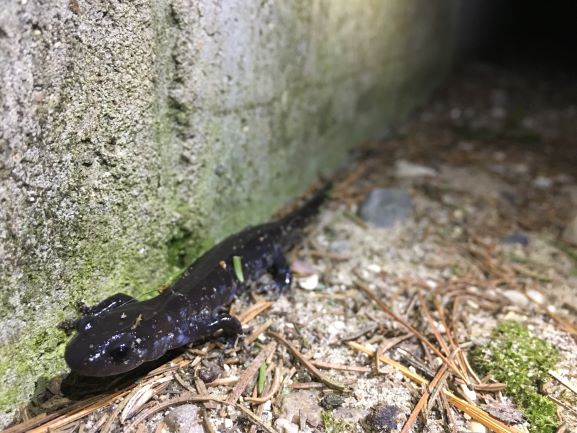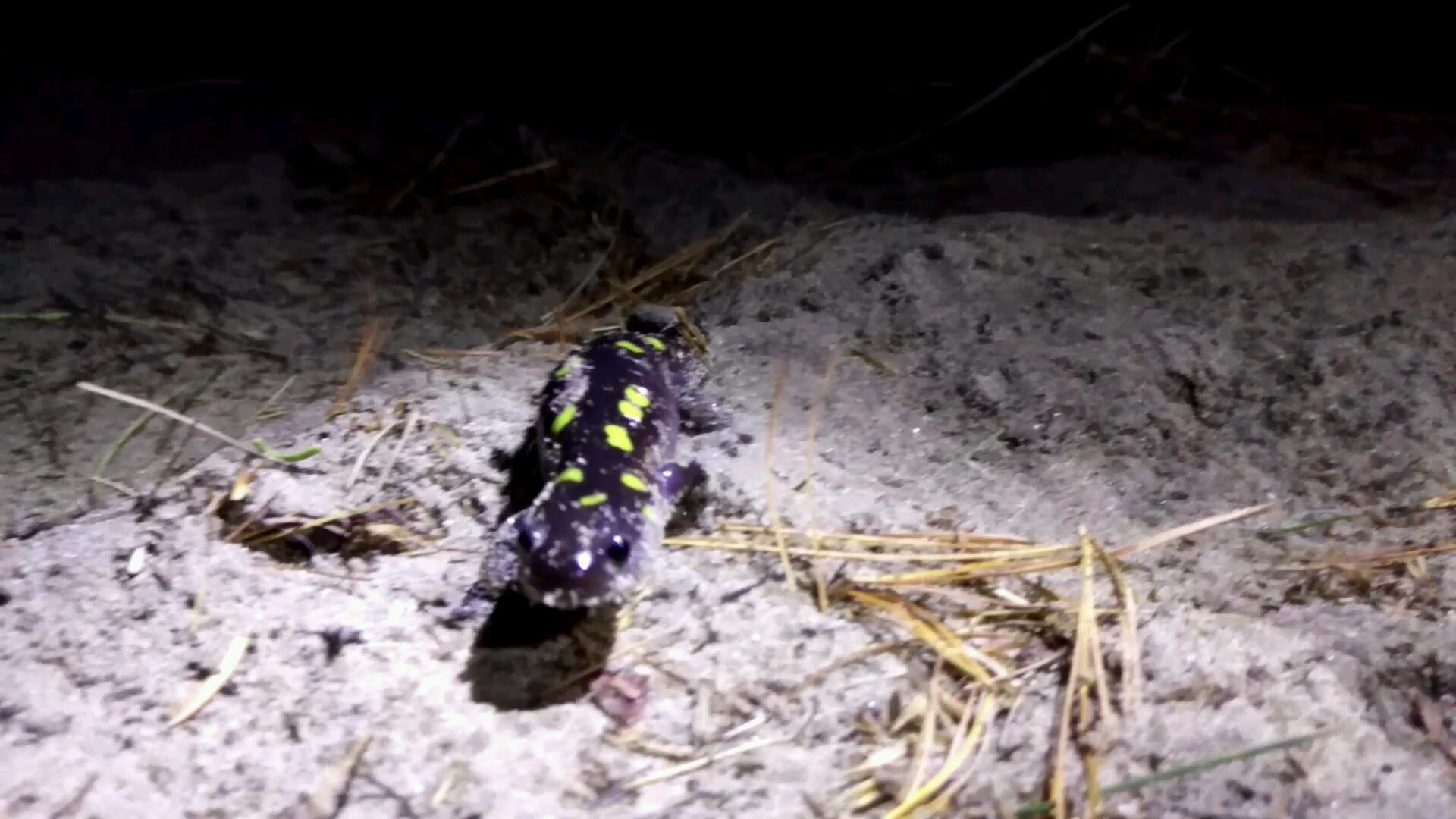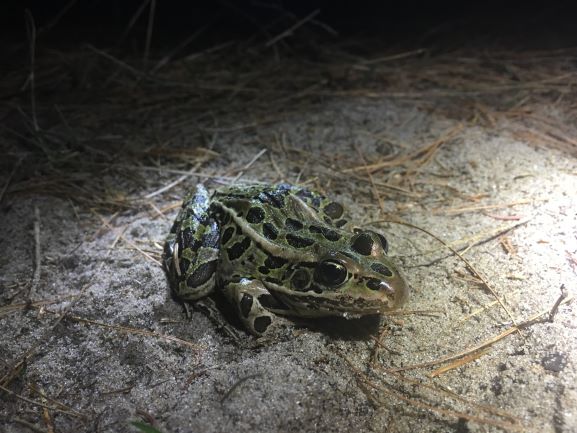Greetings,
As we open and close nets, walk net round after net round, we have the opportunity to witness nature in it’s most amazing moments! Whether it’s Sandhill Cranes flying in or Hermit Thrushes singing in the morning, it’s always a beautiful sight to see.
On April 2nd, as we were walking in some owls for processing, Nick noticed a salamander on the side of our cabin. When we took a closer look, we were able to identify it as a Blue-spotted Salamander (Ambystoma laterale). Blue-spotted Salamanders are in the family Ambystomatidae and are native to the Great Lakes. These salamander are primarily found in deciduous hardwood forest but will also occupy alternate habitat types. They usually prefer vernal pools that retain water through the summer to ensure access to suitable breeding habitat.

On April 9th we had another encounter with a much bigger Ambystomid salamander. As we were closing net three, Nick noticed another salamander walking along the sand. We decided to snap a couple of pictures for later identification. After we captured some photos, we witnessed the salamander swivel it’s way into a tiny den at the base of a Creeping Juniper (Juniperus horizontalis). The photos that we captured are distorted and pixelated but good enough to confirm ID. In this photo you can make out the costal grooves which are present in most Ambystomid and Plethodontid (lungless) salamanders. Costal grooves have various functions from water retention to osmoregulation,and also aid in keeping their body moist.

Our last amphibian encounter was the night of April 14. This was the night after we had captured three Barred Owls. On our way back from the 10 PM net run, we stumbled upon a Northern Leopard Frog (Lithobates pipiens) in the middle of the trail that leads us to our nets. Leopard Frogs are a part of the true frog family Ranidae. In the photo we captured, we have a clear visual of the tympanum. A frogs tympanum functions like an eardrum, transmitting sound waves to the middle and inner ear, permitting the frog hear in air and under water. In some frog species, you can determine sex by the size of the tympanum. Male’s usually have a larger tympanum, sometimes bigger than their eye, opposed to female’s, where it is equal to or smaller than the eye.

If you couldn’t tell, I really like amphibians. If I couldn’t work with birds, they would be my next taxa of choice.
